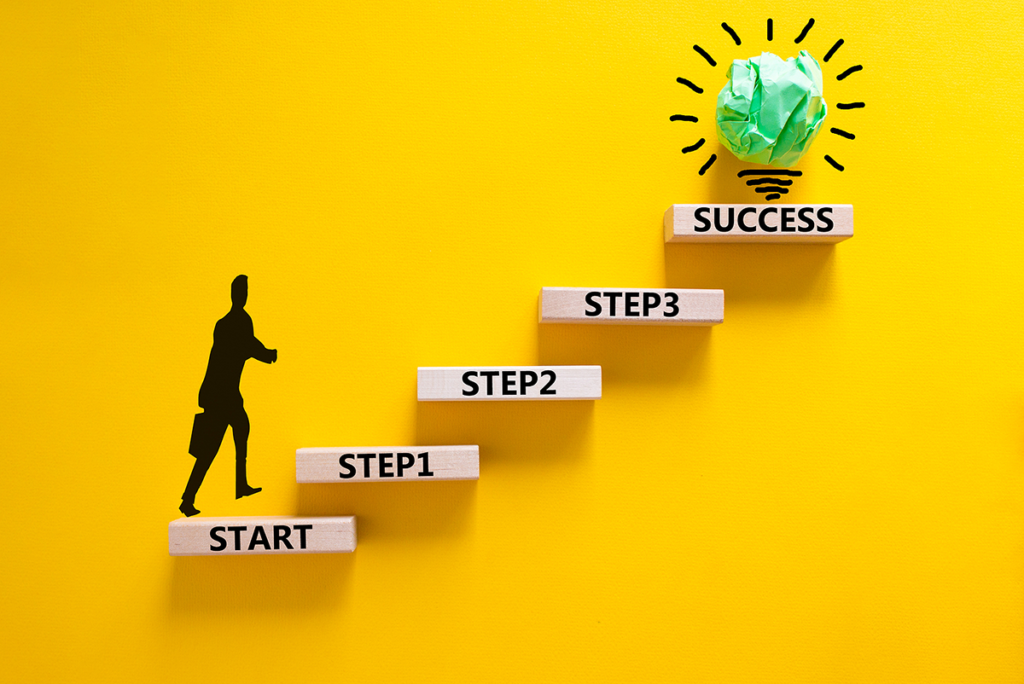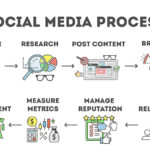
Starting a New Website Overview
Starting a new website can be overwhelming with the myriad of tasks involved, from content development to web design, all while managing the other facets of your business. However, early incorporation of SEO practices can simplify future marketing strategies and enhance your site’s success from the start. Here’s a streamlined guide to launching your new website, organized for clarity and efficiency.
Starting a New Website: A Structured Approach
I. Pre-Launch Preparation
- Define Your Website’s Purpose and Goals: (Purpose and Goals Guide)
- Identify your target audience and tailor content to meet their needs.
- Establish a clear, resonant message across all pages.
- Set specific, measurable objectives to guide your strategy.
- Choose a Domain Name and Hosting Provider:
- Select a domain that reflects your brand and is easy to spell.
- Opt for reliable hosting to avoid bandwidth issues or poor customer service.
- Plan the Website’s Structure and Content:
- Outline core sections and subpages, ensuring a logical flow.
- Draft a manual sitemap to guide design and development.
- Decide on a Website Builder or CMS:
- Research and choose a platform that suits your technical comfort and needs.
II. Design and Layout
- Select a Design That Aligns with Your Brand:
- Ensure the design reflects your brand identity and goals.
- Decide on Pages and Content:
- Incorporate essential SEO elements into your content planning.
- Plan Navigation and Menu Structure and Build a Sitemap:
- Create a user-friendly menu that facilitates easy navigation.
- Draw out or use software to create a simple sitemap. (Sitemap Guide)
III. Content Creation
- Write Clear, Engaging Website Copy:
- Focus on relatability, quality, and incorporating SEO best practices.
- Select and Optimize Images and Videos:
- Ensure multimedia elements are appropriately sized and optimized for fast loading.
- Create Additional Content:
- Include blog posts, product descriptions, etc., to enhance engagement.
IV. Launch and Maintenance
- Website Launch:
- Test all links and functionalities to ensure a smooth user experience.
- Regular Updates and Maintenance:
- Keep the site updated with fresh content and perform regular backups.
- Monitor Traffic and Analytics:
- Use analytics to track success and areas for improvement.
V. SEO and Technical Setup
- Keyword Research:
- Conduct preliminary research to inform content creation and site structure.
- Page-Level Optimization:
- Focus on title tags, meta descriptions, and proper use of headings.
- Technical SEO:
- Set up Google Analytics and Search Console, and ensure your site is indexed.
- For WordPress Users:
- Consider SEO and cache plugins to improve performance and user experience.
Note: The specifics of each step will vary depending on the website builder or CMS you choose. Researching and familiarizing yourself with the platform before starting the building process is recommended.
I. Pre-Launch Preparation…. A little more detail…
1. Define your website’s purpose and goals.
Understanding Your Vision
Before diving into your new website’s technical and design aspects, it’s crucial to solidify the foundation: understanding the purpose behind your online presence. Whether you aim to sell products, provide information, or showcase your portfolio, having a clear purpose will guide every decision you make during website development.
Steps to Define Your Website’s Purpose and Goals:
- Identify Your Target Audience: Who are you creating this website for? Understanding your audience will help you tailor your content, design, and features to meet their needs and expectations.
- Establish Your Core Message: What is your central message to your visitors? This message should resonate throughout your website, from home to contact pages.
- Outline Specific Objectives: Break down your primary purpose into achievable goals. For example, if your main aim is to increase sales, set specific targets like “Increase online sales by 20% within six months.”
- Prioritize User Needs: Consider what your audience is looking for and how your website can solve or fulfill their problems. This user-first approach ensures your site will be valuable and engaging.
- Evaluate Competitors and Industry Standards: Look at what others in your field are doing. This can provide insights into what works well and what you can do differently to stand out.
- Set Measurable Metrics for Success: Determine how you’ll measure your website’s success. This could be through conversion rates, traffic, engagement metrics, or other KPIs relevant to your goals.
Incorporating Purpose and Goals into Development
Understanding your website’s purpose and goals will help you make informed decisions throughout development. This clarity will also help you choose the right content, design elements, and functionalities that align with your objectives, ensuring that every aspect of your website contributes to your mission.
2. Choose a domain name and hosting provider.
Pay attention to the domain.
The URL itself isn’t critical to SEO, but it is critical to building your brand. Ensure your domain name is tied to your brand, product, or the solution you’re providing customers. It should be simple, short, and not easily misspelled to ensure you don’t lose potential viewers.
Understand the Basics of Website Hosting
A Website Provider that you can rely on. Hosting your website on a service that is too cheap may lead to bandwidth issues down the line or terrible customer service when something goes wrong.
Search Engine Optimization
Determine some preliminary keywords.
Keep in mind this will be a process. SEO is a marathon, not a sprint. When setting up your website, it’s impossible to know which keywords will be most important to focus on and which you’ll need to lean into to maximize your success. That being said, keyword research at this stage will make a world of difference when creating a website that is meaningfully designed and valuable to your viewers.
Each page of your website should have a clear audience and purpose. Some preliminary keyword research can help you understand different types of user intent. This can also help you identify phrases of words or combinations that you may not have thought of. Use some of this research as inspiration, but don’t restrain yourself – your keywords shouldn’t be a shopping list that just gets checked off.
At this stage, keyword research helps ensure you’re structuring your website intentionally to set you up for long-term success.
Begin drafting content
Once you have an idea of the website structure and have done some preliminary keyword research, it’s time to begin writing some content. The most important thing to remember when it comes to the content on your website is that relatability and quality are key. Even if SEO-optimized content is your ultimate priority – don’t forget that you are writing to a human audience. A helpful acronym to keep in mind is EAT. EAT stands for Expertise, Authoritativeness, and Trustworthiness. Google itself considers these three concepts critically important. The concept is even incorporated into the Google algorithm.
There is no magic bullet regarding page length, style, or word choice. You should write as much as you need to tell the story. Your content should be unique and speak to your brand’s value proposition.
That being said, what makes for good SEO is generally the same content that makes for a good experience for your website visitors. Concerning content length, keep in mind people’s attention spans. (300-700 words is a good baseline.) Break up the content into smaller, easily digestible paragraphs that are more user-friendly than long blocks of text. And interlink whenever possible. By including links to other pages where it makes sense, you can improve your website engagement, keeping people on your website for longer. This improves your SEO optimization and encourages your visitors to dive deeper. (Case in point: How much time have you spent falling Wikipedia rabbit holes?)
One last note about content – think beyond just the written word. With SEO, it can be easy to focus on the words on the page but keep in mind images and other forms of media as well. Make sure your images are sized correctly for websites. Keep the total size of images on the page to 3 MB or less for optimal page loading. But there’s so much more to it. Consider adding video content, audio, or whatever forms of multimedia you can. Everyone consumes content differently. The more methods you utilize to get your content to your audiences, the more ways you have to connect.
Spend some time on page-level optimization.
Once you have some basics covered, it’s time to focus on page-level optimization. There are a few steps that are set up from a website’s initial launch that will save you so much time down the road.
- Pay attention to title tags: They should be about 70 characters in length and contain the keyword that is the priority for the page.
- Include meta descriptions: This is an opportunity to describe what’s on the page and speak to the web searcher so they can understand that your page is what they’re looking for. Keep this description to about 160 characters and include keywords as close to the front of the sentence as possible.
- A note about headings: Your H1 heading should have the keyword for that section. Be sure to nest (H1, H2, then H3 is great but don’t go from H1 to H2 to H4.) Keywords should be used as they make sense for nested headings, but don’t overdo it. Use headings intentionally for maximum impact.
- Stay focused on the point: If you’ve done your initial brainstorming and strategizing correctly, you should be able to identify in a straightforward concept what each page is about. Keep this in mind as you continue to structure your website.
Don’t forget your technical setup.
Once the website is built, a few additional steps must be taken.
Analytics and Search Console
First and foremost, set up Google Analytics. This will track what’s happening once people get to your site. This is critical to begin gathering the data you need to continue improving upon your website in future edits and updates.
Next, set up the Google Search Console. This houses Google’s data about your site. It has search phrases, page queries, impressions, conversions, and more. Google keeps the data for 16 months, providing another essential source of intel for you as you continue building.
You’ll also want to ensure that you have an XML sitemap. This file helps Google understand your website’s structure so that the search engine can understand what pages are contained within your website and how to reach these pages.
This legwork is unhelpful if your website isn’t indexed on Google. About two weeks after you’ve launched, once you’ve made sure you’ve covered all of your bases, go into your Google Search Console to double-check that your website has been included in Google Search results.
For WordPress Users
Finally, there are a couple of plugins that you can install that will save you time and improve your viewers’ experience. An SEO plugin will make optimizing your website much more accessible by providing helpful suggestions, helping you track keyword usage, and more. Less obvious but also essential to install during a website’s early days is a cache plugin. This can help page speed by providing a static webpage version to returning visitors.
Best Practices
Once the technical aspects are down, achieving and maintaining good SEO is all about ensuring that your website answers your viewers’ questions accurately and effectively. This means that, above all else, it is essential to be intentional.
- Be intentional with your web pages by ensuring that each has a clear audience, intent, and purpose. Be intentional with your UX/UI as well. If you rank well and people come to your website but don’t engage, your ranking may drop. Google wants to make sure people can find what they are looking for.
- Remember that people can land on any part of your website, but a well-designed website structure will enable you to capture those viewers and funnel them to the right webpage that suits their needs.
- If you’re working with a web developer (or designing a website on your own) keep in mind some of the new standards expected of modern websites. Things like ADA compliance are critical, so you aren’t unknowingly excluding specific viewers. Page speed and mobile readiness have also become increasingly important. No one is going to sit around and wait for a website to load, and as more people continue consuming more content on mobile devices, any page that isn’t mobile-ready will turn away potential viewers.
And, perhaps most importantly, remember that an SEO plan at the beginning can be helpful, but it is still just a preliminary roadmap. As your website grows and develops, you will need to adjust your SEO strategy accordingly.
Make sure to check your site regularly for fixes and updates!

Since its launch in 2016, Bizbotweb has been at the forefront of empowering businesses and individuals to easily navigate the digital world, from owning their intellectual property to managing websites and simplifying WordPress setups. As the author of our articles, the “Chief Robot” brings a wealth of knowledge and innovation, embodying Bizbotweb’s commitment to making digital presence seamless and accessible for everyone. Focusing on integrated digital marketing efforts, our content is designed to guide users through the evolving digital landscape, ensuring they have the tools and insights needed to thrive online.
Blog Categories
Check out other Pages
Have questions?
Schedule a free consultation if you have questions about our digital marketing services or would like additional information.










